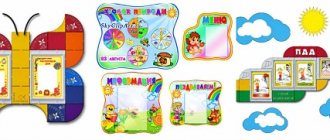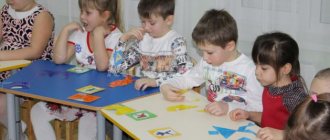A sea of unforgettable experiences for children and possibly adults. Planetarium programs allow you to immerse yourself in the secrets of the world, explore the corners of our planet, improve your erudition and increase knowledge about the world around you. The unusual presentation of educational material makes the learning process exciting and accessible for children even in the provincial parts of our country.
Description of the project “Mobile Planetarium”
- An inflatable dome, which is made of durable material that does not transmit light. Inside the dome, a video image is demonstrated on the entire internal surface at 360 degrees. This is possible thanks to the internal coating of the dome, a projector and a special hemispherical mirror. This creates a kind of “presence effect”
- The structure is light and compact in design; it can be placed almost anywhere, both outdoors and indoors. The main thing is that the room has an area of at least 40 square meters. meters and a ceiling height of 3.5 meters, these could be gyms of kindergartens and schools, shopping centers.
- A sea of unforgettable experiences for children and possibly adults. Planetarium programs allow you to immerse yourself in the secrets of the world, explore the corners of our planet, improve your erudition and increase knowledge about the world around you. The unusual presentation of educational material makes the learning process exciting and accessible for children even in the provincial parts of our country.
Installing the planetarium structure takes a total of about 20 minutes, the dome is inflated using an air blower in 5 minutes, the rest of the time is spent on placing equipment and chairs. Only 1 person can manage the planetarium and make trips to different schools, camps and kindergartens. Thus, it can be called mobile.
Types of equipment
You can buy a children's planetarium in various designs:
- inflatable dome with a classic projection system;
- inflatable dome with Fepas projection system;
- frame-vacuum dome with a classic projection system;
- frame-vacuum dome with Fepas projection system.
Fepas projectors are equipped with Sony LCDx3 modules that output images in Full HD resolution. Luminous flux power – 4300 lm. The video has high contrast and creates unforgettable images.
The duration of one session does not exceed 40 minutes. This allows you to comfortably fit the use of a planetarium at school within the educational process, without changing the lesson schedule.
It is possible to install a planetarium in a kindergarten. For young visitors there are bright entertaining and educational videos.
Where can I use a mobile planetarium?
- In places where children gather: schools, kindergartens, camps, etc.
- Shopping centers, adults also willingly visit the planetarium
- Museums
- Palaces of creativity
A mobile planetarium is mobile because it can be transported at any time and any place. For example, use it in childcare centers on weekdays, and put it in a hypermarket on weekends.
USE OF PLANETARIUM IN THE DEVELOPMENT OF COGNITIVE ACTIVITY OF PRESCHOOL CHILDREN.
Teacher at State Budgetary Educational Institution "SPK im. PC. Menkova" - Kurnaeva O.S.
Student at State Budgetary Educational Institution "SPK im. PC. Menkova" - Malerik D. A.
USE OF PLANETARIUM IN THE DEVELOPMENT OF COGNITIVE ACTIVITY OF PRESCHOOL CHILDREN.
Annotation.
The article analyzes the possibilities of using such modern interactive technology as a planetarium in the educational process of preschool educational institutions in order to expand the intellectual level of the child, his divergent thinking, the ability to work in a team, and take an active part in specific activities.
Keywords.
Interactive technologies, development of competencies, divergent thinking, design, direct educational activities.
Modern education requires people to possess such qualities as the ability to navigate in any situation, variability, the ability to look at things critically, and psychological stability. Modern Russian schools are mainly aimed at deepening and expanding the intellectual level of the child, often without taking into account the development of such important competencies as the ability to think in different directions (divergent thinking), the ability to design and implement their own projects, the ability to work in a team, the ability to cope with complex life situations. situations [2].
“We live in an era when the distance from the wildest fantasies to completely real reality is shrinking with incredible speed,” Maxim Gorky once wrote [1]. And now, in an age when technology has stepped far forward, the words of M. Gorky ring especially true: “You can’t go anywhere in the carriage of the past...”[3].
In the modern 21st century, interactive technologies for learning have increasingly begun to be used. The world does not stand still; it is constantly improving and improving in the field of education. Thanks to interactive learning (“a type of information exchange between students and the surrounding information environment”), the process of acquiring knowledge for children becomes much more interesting than ordinary traditional learning. The child interacts with the teacher all the time, being in equal conditions. With the help of interactive technologies, the explanatory and illustrative method of teaching can be relegated to the background, since the preschooler can take an active part in specific activities.
Now we will look at one of the best interactive technologies - a planetarium (from the Latin Planetarius “astrologer, astrologer”). It was first built in Germany in 1925, but it appeared in Russia in 1929. Since those times, this type of technology has been gaining popularity, attracting parents and children, introducing them to the unknown universe and its secrets. .
What was the planetarium like?
The first planetarium consisted of:
- optical-mechanical device “Planetarium”;
- digital projection device.
In Russia, 39 planetariums were installed, but not evenly, that is, in one city there could be 1 or 2, or not be equipped at all. A separate building was allocated for planetariums.
Later, digital (mobile) planetariums appear, they can be moved. Such a planetarium consists of a dome with a zipper and several projectors, speakers, and light insulation. They became famous due to their inexpensive equipment and uncomplicated use. It is worth noting that one teacher can handle the installation of the planetarium. The dome can accommodate from 10 to 40 people. The weight of the dome ranges from 20 to 40 kilograms [4].
Who does the planetarium work for?
Primarily for children. The planetarium is designed for absolutely every age, from preschoolers to adults. Conversations are conducted with younger children in a playful way. Illustrations are selected to match the content of the material. After the story, watch the movie.
The planetarium is one of the options for an interactive learning system .
This system allows you to achieve complete immersion in the information. To understand the sensations that a child gets in a planetarium, imagine a 3D picture; when you put on glasses, it seems that the picture becomes three-dimensional. And in the planetarium you will see a planet flying straight at you, flying overhead, disappearing behind you. Educational films are 15-20 minutes long, but during this time preschoolers remember more than in a group lesson. These planetarium videos tell children in an accessible form about the planets of the solar system, about the first space explorers. There is also the opportunity to see our planet, the moon, stars, meteorites up close, to plunge into and feel like a part of the vast universe.
How is a planetarium used in preschool classes?
With the advent of the mobile planetarium, which happened not so long ago, direct educational activities in preschool institutions have become more diverse and rich with the use of this equipment. With its help, children are given the opportunity to find themselves in those spaces that not everyone can visit. Broadens the horizons of preschoolers, increases interest and thirst for knowledge.
For example, when getting acquainted with space
Before the start of the lesson, preliminary work (conversation) is carried out with the children on the topic: “Space”, and, going to the planetarium, the children already have ideas about space, planets, stars.
The teacher must remind us of safety precautions : “Cosmonauts are very disciplined people.
And we, like cosmonauts, will very calmly go into the planetarium one after another. You know that astronauts in a rocket are not standing or sitting, but lying down. And we, like real astronauts, will enter our spaceship and travel while lying down. Without a doubt, any journey is interesting and you will want to ask something, but I ask you to remember your questions and ask me them when you leave the planetarium.” The lesson can be taught either by a specially trained person or by a teacher. Working with the planetarium does not cause any great difficulties, which means that anyone can cope with this equipment. Before the lesson, the teacher determines the method by which he will give information to the children, for example, a gaming / comparative method (the Sun is dad, and the planets are his children). With the help of this form of work, great interest is aroused in children, which can be seen in the discipline. The teacher talks about each planet: what it is, temperature, satellites, what it consists of. After finishing the lesson, you can invite the children to draw on a sheet of paper what they liked best and remembered.
When exploring the underwater world
the use of a planetarium creates a on the bottom of the sea/ocean. Thanks to the educational film, which is shown in the dome, children have the opportunity to examine each animal, its real size, and not reduced on the visual aid, method of movement, etc. Children can see a wide variety of sea animals (from the most common - perch, herring, crucian carp, to unusual in appearance - ball fish, sword shark, sunfish, etc.), types of coral reefs, etc. At the end of watching the film, the teacher talks with the children about what they saw and remembered, and then asks them to depict what they liked.
Following conclusions from general psychology, thanks to the unusual presentation, emotional atmosphere, and unusual environment, the acquired knowledge is absorbed faster and more effectively. If you leave the planetarium and ask the guys: “What do you remember?”, be sure that they will tell you most of the material.
The use of interactive technologies in kindergarten stimulates children's cognitive activity, develops divergent thinking, and children's ability to navigate a large flow of information and use it.
Perhaps the planetarium will become the basis for further updates that will arouse great interest among children, or will reveal potential for something [5].
LIST OF SOURCES USED
- Gorky, M “On the music of the fat people” State music publishing house: Moscow - 1931.
- Danilchenko S.L. Sevastopol Pedagogical College named after P.K. Menkova: from the past to the future // Society, science, education: trends and development prospects. Collective monograph. - Ufa: AETERNA, 2022. - 374 p.
- Serov, V.V. “Encyclopedic Dictionary of Catchwords and Expressions” // LLC Publishing House “Lockid Press” - 2005.
- [https://www.openbusiness.ru/html/dop11/planetarij.html].
- [https://dohcolonoc.ru/cons/9697-ispolzovanie-sovremennogo-interaktivnogo-oborudovaniya.html] .
Advantages of offering a mobile planetarium for children's institutions
- There is no need to organize trips for children; the mobile planetarium itself will arrive where needed and at any time.
- A session with all organizational aspects takes exactly one lesson, so there is no need to disrupt the educational process.
- Sessions in the planetarium increase interest in development and learning, increase the degree of assimilation of educational materials, as they combine entertaining, educational and educational moments.
The mobile planetarium is absolutely safe, as it consists of fire-resistant material, it has no floor, so unobstructed exit is possible. Inside the planetarium, the ventilation system is constantly running, which means it can’t be stuffy there.
"Excursion to the Planetarium." Outline of GCD on the topic “Space”
Evgenia Minabutdinova
"Excursion to the planetarium." Outline of GCD on the topic “Space”
Excursion to the planetarium
Goal: development of cognitive activity of children.
1. Introduce children to the scientific and educational institution “ Planetarium ”
2. Consolidate and systematize knowledge about Space (stars, constellations, solar system , planets ). To clarify knowledge about space and astronauts .
3. Develop attention, memory, observation skills. Skill to work in team.
4. Foster a sense of pride for our Motherland.
5. Activate children's vocabulary: space , solar system astronaut , constellations, satellite, names of planets .
Preliminary work: GCD cycle “What is space ”
Materials: audio recording of the song “Bibika”
;
poster of the starry sky with drawn constellations of Ursa Major and Ursa Minor, the polar star; pieces of blue paper with constellations and a simple pencil for each child. Images of planets , solar system, moon. Flannelgraph, planets and sun for flannelgraph. Models of the satellite and rocket, photographs of dogs Belka and Strelka, cosmonauts . Video of a rocket launch from the Baikonur Cosmodrome , laptop, TV. Tangram “Rocket”
for 3 teams; asterisks blue, yellow and red (for dividing into
— Children, today we will visit one very interesting place. It's called " Planetarium "
.
A planetarium is a scientific and educational institution that displays the celestial sphere with stars, planets and satellites , comets and meteors; also solar and lunar eclipses, panoramas of the Moon, Mars, Venus and climate zones of the globe. Simply put, a space .
Music "Bibik"
, children imitate the movement of a car and move around the room.
1 hall "Starry Sky"
— At what time of day can you observe the starry sky? (night, evening)
— What can you see in the starry sky? (moon, stars, constellations)
-What is the moon? (Earth satellite)
-What are stars? (these are huge gas balls)
- Why do we see them small? (are far away)
— What are constellations? (these are figures formed by bright stars)
Look at the starry sky of the planetarium : here is the polar star, by which sailors used to navigate, in which direction the polar star is - there is north.
Here is Ursa Major and Ursa Minor, what do they look like? (ladle)
Here is a big bear
Star porridge interferes
And nearby there is a dim light
— Children, in my opinion, is there something wrong with the starry sky of the planetarium ? (few stars and constellations)
— I propose to supplement the sky with constellations. “pieces” on the tables
starry sky with stars, you need to connect the stars with a line to make constellations.
The teacher sticks on the “pieces”
to the starry sky, naming the constellations.
2 halls " Space "
— What is space ? ( interplanetary , interstellar, intergalactic space with all the bodies located in it)
— What bodies are there in space ? ( planets , stars, comets, asteroids, black holes, satellites)
— Our space system is called the “Solar System”
, Why?
(
planets move around the sun) .
-How many planets are there in the solar system and what planets do you know ?
We will now lay out the solar system on a flannelgraph.
Children go out one by one and lay out the cosmic body . Naming the main characteristics: this is the sun, a huge hot ball of gas. planets move around it ; Mercury is the smallest planet , hot and is closest to the sun, Venus also has an atmosphere, but it is not suitable for life; Earth - there is life on it, Mars is a red planet , Jupiter is the largest planet , Saturn - it has rings, Uranus is a green planet , Neptune is the coldest and most distant planet .
— How did people learn about the planets , that they are round and about other cosmic bodies ?
Hall 3 " Cosmonautics "
— People didn’t immediately fly into space ; first, a satellite invented by Korolev was sent into space .
(demonstration of satellite layout)
Then the dogs flew.
— What are the names of these dogs? (Belka and Strelka)
.
-Which person was the first to go into space ? (Yu. Gagarin)
- On April 12, 1961, for the first time in the world, Yu. Gagarin made a successful flight around the Earth in a spaceship . Our country is proud of this feat.
Here are more portraits of Soviet cosmonauts who repeated Gagarin’s feat: G. Titov, V. Tereshkova, S. Savitskaya.
— What do astronauts do during a flight ? (They conduct medical and technical observations, study the surface of the Earth, the Moon, and other planets . They report on approaching hurricanes, typhoons, natural disasters, clarify the weather forecast, and provide satellite television and radio communications.)
Watch the video “Rocket launch from the Baikonur Cosmodrome ”
.
What equipment to choose for a mobile planetarium
Sessions can be attended by a variety of age groups, and there are many films to suit different interests and ages. The dome with a diameter of 5 meters can accommodate up to 15 people.
It is possible to purchase planetarium equipment individually or as a complete turnkey set. The list of required equipment includes:
- Dome
- Spherical mirror
- Projector Full hd 1920*1080
- Player with connecting cables
- Supercharger
- Acoustic system
- Projector stands and mirrors
- Connecting wires
- Movie
All this will cost approximately 155,000 rubles.
You will also need chairs or sofas (RUB 15,000), as well as equipment delivery (RUB 20,000). Total capital investments will amount to 190,000 rubles.
How much can you earn by opening a mobile planetarium?
During weekdays, approximately 8 trips will be made per month; 3 groups (15 people) will be served on each trip. On the weekend there will be about 5 sessions, but the hall will be only 20% occupied. The total number of people served per month will be: (8 x 3 x 15) + (8 x 5 x 15 x 20%) = 480 tickets sold.
Price of 1 ticket = 100 rubles.
Total monthly revenue: 480 x 100 = 48,000 rubles.
Net monthly profit: 48,000 – 30,000 = 18,000 rubles.
Annual profit: 18,000 x 12 = 216,000 rubles.
The payback period for the Mobile Planetarium project will be 1 year.
These indicators are calculated taking into account the very low workload of the project. In conditions of decent advertising and daily work, economic efficiency indicators will be much higher.
Business vision technology – mobile planetarium
The technology of doing business related to a mobile planetarium is primarily related to the choice of its location. To do this, it is necessary to analyze the target audience in this place, and it includes children aged 3 to 14 years. After this, calculate the financial costs of purchasing everything necessary, and this is not only the rental and purchase of equipment, but also employee salaries, tax payments, etc. In addition, you will need to spend money on an advertising campaign to attract as many visitors as possible. These are not all the points concerning the technology of doing business - a mobile planetarium.
( 1 ratings, average: 5.00 out of 5)
Loading…
Similar business ideas:
- TOP 30 business ideas without investment
- TOP 30 business ideas with minimal investment
- The best business ideas for a village
- Sand painting – art therapy, art and business
History of planetariums
The honor of inventing the planetarium belongs to the German engineer O. Miller, who developed a projection apparatus and installed it in the German Museum in 1925. In our country, the first planetarium was opened in 1929 in Moscow. Today the Moscow Planetarium is not only one of the oldest, but also one of the largest in the world. It is equipped with a small observatory and a museum with a variety of physical instruments, including a Foucault pendulum.
The first devices did not have the same capabilities as modern planetariums, and showed a picture of the starry sky, which can only be seen at a certain latitude - as a rule, at the one where the device was installed. However, just a few years after the demonstration of the first planetarium, an installation was created that made it possible to demonstrate a picture of the starry sky, visible from anywhere on our planet, including from the Southern Hemisphere.
Modern installations controlled by digital devices can recreate almost any option, linked to the geographic and time coordinates of observation. There are several thousand planetariums in the world. Almost all planetariums in Russia are united in the Association, on the website of which you can find out the address of any of these institutions.







